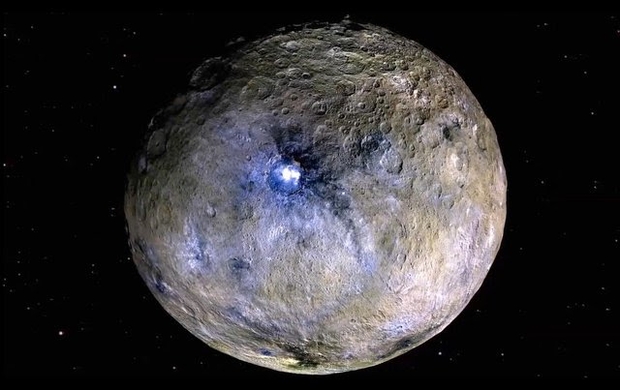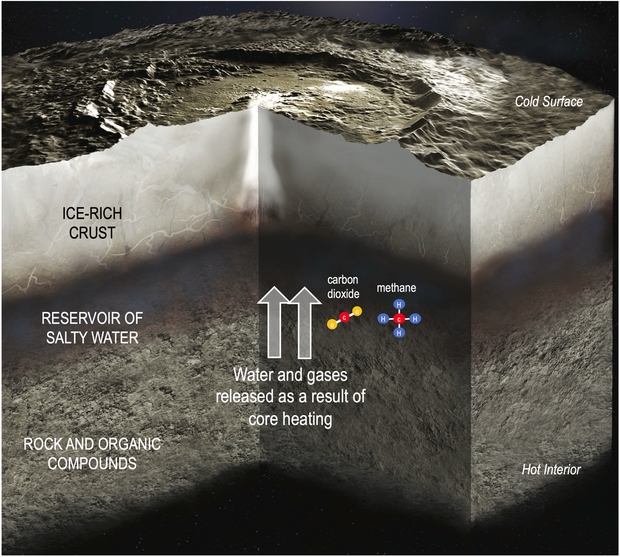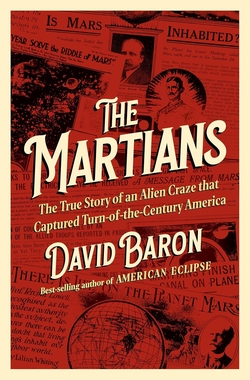We keep going through revolutions in the way science fiction writers handle asteroids. Discovered in 1801, Ceres and later Pallas (1802) spawned the notion that there once existed a planet where what came to be thought of as the asteroid belt now exists. Heinrich Olbers was thinking of the Titius-Bode law when he suggested this, pointing to the mathematical consistency of planetary orbits implicit in the now discredited theory. Robert Cromie wrote a novel called Crack of Doom in 1895 that imagined a fifth planet blown apart by futuristic warfare, a notion picked up by many early science fiction writers.
Nowadays, that notion seems quaint, and asteroids more commonly appear in later SF either as resource stockpiles or terraformed habitats, perhaps hollowed out to become starships. Nonetheless, there was a flurry of interest in asteroids as home to extraterrestrial life in the 1930s (thus Clark Ashton Smith’s “Master of the Asteroid”), and actually none other than Konstantin Tsiolkovsky wrote an even earlier work called “On Vesta” (1896), where he imagines a technological civilization emerging on the asteroid. Before someone writes to scold me for leaving it out, I have to add that Antoine de Saint-Exupéry’s The Little Prince (1943) assumes an asteroid as the character’s home world.
The Dawn mission that did so much to reveal the surface of Ceres made it clear how cold and seemingly inimical to life this largest of all asteroids seems to be. But even here, there is new speculation about a warmer past and the possibility of at least primitive life emerging under the frigid surface. The reservoir of interior salty water whose surface residue can be seen in Ceres’ reflective regions now appears, via Dawn data, to contain carbon molecules. So we have water, carbon molecules and a likely source of chemical energy here.

Image: Dwarf planet Ceres is shown in these enhanced-color renderings that use images from NASA’s Dawn mission. New thermal and chemical models that rely on the mission’s data indicate Ceres may have long ago had conditions suitable for life. Credit: NASA/JPL-Caltech/UCLA/MPS/DLR/IDA.
The new work from lead author Samuel Courville (Arizona State University) and team is built around computer models of Ceres, looking at its chemistry and thermal characteristics since the early days of the Solar System. The evidence shows that as late as 2.5 billion years ago, the asteroid’s internal ocean was still being heated by radioactive decay of elements deep in the interior, providing dissolved gases carried by upwelling hot water exposed to the rocks in Ceres’ core.
That’s a significant marker, because we know that here on Earth, mixing hot water, metamorphic rock and ocean provides everything life needs. Demonstrating that Ceres once had hydrothermal fluid feeding into its ocean would imply that microbes could have formed there, even if today they are long gone. Today heat from radioactive decay should be insufficient to keep Ceres’ water from turning into a concentrated brine, but the situation several billion years ago was similar to that of many Solar System objects which lack any source of tidal heating because they do not orbit a large planet.

Image: This illustration depicts the interior of dwarf planet Ceres, including the transfer of water and gases from the rocky core to a reservoir of salty water. Carbon dioxide and methane are among the molecules carrying chemical energy beneath Ceres’ surface. Credit: NASA/JPL-Caltech.
From the paper:
Since Ceres is not subject to as many complex evolutionary factors (e.g., tidal heating) as are many other candidate ocean worlds that orbit gas giants, it is an ideal body to study evolutionary pathways relevant to candidate ocean worlds in the ~500- to 1000-km radius range. Being in large numbers, these bodies might represent the most abundant type of habitable environment in the early solar system.
An interesting thought! We can even speculate on how long this window of astrobiological opportunity might have remained open:
From a chemical energy perspective, the most habitable periods for these objects were when the rocky interiors underwent thermal metamorphism. Metamorphism leads to an influx of fluids into the ocean. These fluids could provide a steady source of chemical disequilibrium for several hundred million years. In the case of Ceres, the metamorphic period between ~0.5 and 2 Gyr would have created a potentially habitable environment at the seafloor if the rocky mantle reached temperatures greater than ~700 K. The decreasing temperature of Ceres’s interior over the past ~1 Gyr would likely render it thermodynamically inactive at present.
A sample return mission to Ceres? Such is recommended as a New Frontiers mission in the decadal survey Origins, worlds, and life: a decadal strategy for planetary science and astrobiology 2023–2032 (The National Academies Press, 2022). The document cites the need for samples “…collected from young carbonate salt deposits, typified by those identified by the Dawn mission at Occator crater, as well as some of Ceres’s typical dark materials.”
The paper is Courville et al., “Core metamorphism controls the dynamic habitability of mid-sized ocean worlds—The case of Ceres,” Science Advances Vol. 11 Issue 34 (20 August 2025). Full text.



There was a suggestion that Ceres “ocean” might still be slushy, and that the pressure at depth could at least keep the ocean liquid, rather than frozen.
Ceres is easier to reach, and its surface more accessible, than the icy moons of Jupiter and Saturn. A very worthwhile mission that would also be a learning opportunity for a similar future mission to the surface of Enceladus, or Europa.
It would certainly be interesting if a sample from the surface contained traces of biologically plausible molecules, with a complexity factor and limited number of different basic simple organic molecules that would be predicted from “Assembly Theory”.
Ceres is still my favorite as the propellant/fuel and life support refueling station of the inner solar system. Unlike the Moon, the water is likely extremely plentiful and just needs extracting and purifying. In Odyssey 3, Clarke set the arrival of Halley’s comet as the location of an emergency refueling of a spaceliner for a rescue mission. Ceres however, would be a better long-term option, with far more water than a comet. No surprise that the Belters were located on this dwarf planet in the Expanse novels.
It is encouraging that, in addition to water, Ceres also has carbon. Our moon is not so fortunate.
Ceres has been a space destination that has been exciting all along for such possibilities. The Dawn spacecraft slow closing in on the asteroid was tantalizing due to the emerging features of the Occator Crater and its mysterious deposits, s.
Clearly something fluid and likely hydrous had geysered out from the interior and
there were some space telescope detections of water in the vicinity as well.
From a geological standpoint, it certainly looked more alive than the Moon.
Several years prior, with some colleagues we submitted a proposal involving flybys and tethers to get Ceres water to the moon. A disturbance of the pristine for sure. But as far as the moon was concerned, what would have been a better alternative?
But more to the point, for the case of Ceres itself, the distinctions between “paleoclimate for life” and life’s origins come to mind. For example, here on Earth we have biological pockets where mature forms of life (e.g., invertebrates such as crabs) found niches near hydrothermal vents such as in the deep Pacific trench off the coast. The biota such as blind crabs originated elsewhere and adapted to the locale; other components I am not sure where they might have originated, but likely their ancestors wandered toward the vents and survived as well.
And that would apply for consideration here too. While in time and space there would be regions on Ceres where life forms could establish a niche, but would the chemistry proceed any further than organic chemistry short of life? In other words, did biological contaminations here on Earth seep to the depths or did biology start there in the first place?
Of course, I don’t know, but suspect the latter is a conclusion widely held. The issue of whether primitive life began below or above the surface lurks here as well. First reading of these attempts to dig under the ice on Europa or Mars, one might focus on the practical issues of getting a drill or excavation started. But this threshold issue is lurking there too. Considering Ceres’ allure, it might be the next issue to examine. A robot might start drilling just next to a surface sea shell.
Secondly, decades ago, a compelling reason to subscribe to Science or join the AAAS was likelihood that the journal would publish spacecraft mission reports on planets, moons, asteroids… Those are the issues I never threw away.
But there is hardly elbow room anymore in the flagship publication with all the
“advances” in other fields, particularly biomedical. I am not entirely clear on
Science Advances access. Definitely unclear on how they assign an “advance” to a publication. But is it like Nature, where occasionally the publishers are moved to share an article? A separate subscription for members of the society?
Or available to all subscribers of Science? Members of the AAAS as it were.